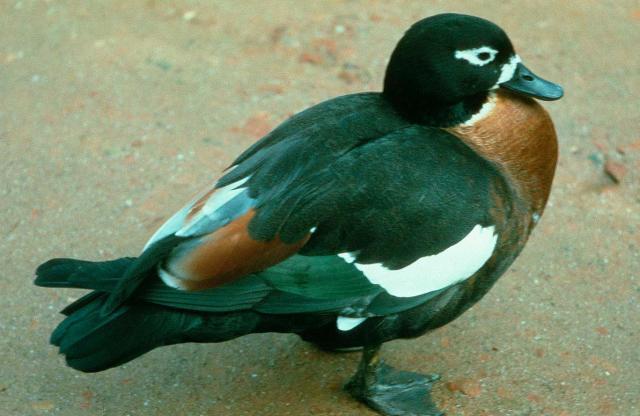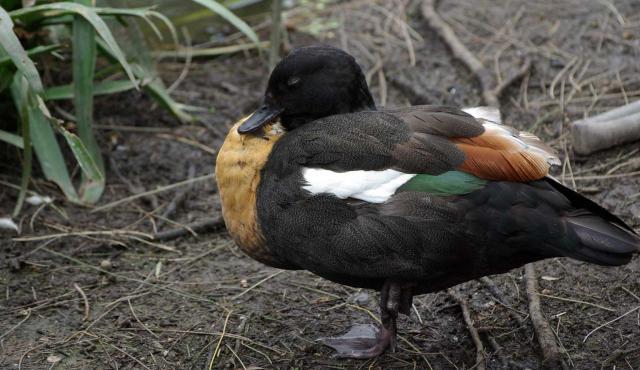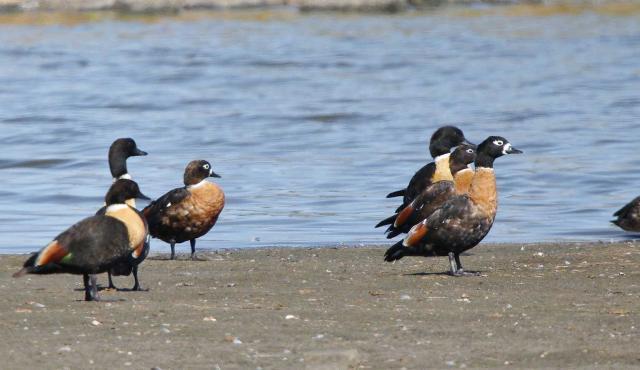


Australian Shelduck
Tadorna tadornoides
| Details | |
|---|---|
| Type | Bird |
| Group | |
| Other Common Names | Chestnut-breasted Shelduck, Mountain Duck |
| Biology | Breeds June-November. Often found in very large flocks. These disperse during late winter and monogamous pairs form and establish territories. Nests are built in tree hollows and occasionally down rabbit holes. Only the female incubates the eggs. Clutch size is between 5 and 14 and incubation is between 30 and 35 days. |
| Distinctive Markings | Upright stance and a dark head contrasting with a white neck ring in both males and females. |
| Taxonomy | |
|---|---|
| Phylum | Chordata |
| Class | Aves |
| Order | Anseriformes |
| Family | Anatidae |
| Genus | Tadorna |
| Species | tadornoides |
Source: Atlas of Living Australia
Females and males can often be heard calling to one another. The male honks loudly and the female responds with a buzzing call.
| Interesting Facts | |
|---|---|
| Diet | Omnivore. Feeds on pasture or aquatic vegetation. Also eats algae, insects and molluscs. |
| Habitat | Prefers freshwater habitats including lakes, estuaries, dams and flooded paddocks. Will frequent saltwater but this needs to be close to a supply of freshwater. |
| Native Status | Native to Australia |